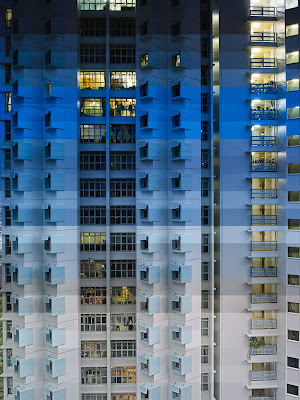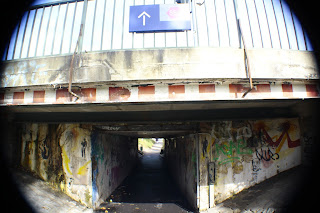Taken in Prague June 2013 on a long wall filled with graffitis.
Side of a building in the Paris streets, June 2013.
Underpass in Munich, October 2011.
I've always thought that graffitis were vandalism when in Singapore but as I travel and opened my eyes to the beauties of street graffitis, I've learnt to appreciate the art in them. The past few years as I've travelled across a few countries in Europe and United Kingdom and I've walked past many walls that were spray painted with vibrant colors. Some may have meaning to them and some may not but the colors and designs come together with the neighborhood and sometimes enhances the walking experience. These burst of colors and meaning on plain sidewalk walls are not just vandalism anymore, instead it feels like they're painting a story or giving meaning to just a simple road picture and I find that amazing. These spur of the moment works that are on walls inspire me to be more creative. The colors, shapes and movement in them go well together to create a story. Some may be really just be plain vandalism but when on a wall with many other graffitis or spray paint works, it can tell a story or just be a mere wall with names on it and that to me is something interesting and wonderful.
I've heard about 2 notable graffiti artist that were involved in a "Graffiti War" - Banksy and King Robbo - with each other. The 'war' started back in 1985 on a tunnel in Camden, London and the original artist being King Robbo. They have never met but they would paint over each other's work to prove a point. Since then they have painted over each other's work notably and fans have started to anticipate what the next artist would spray paint next. Since the fights, their fan base grew. Seeing their works and reading the story made me realize the beauty of graffitis and how it can depict a story with colors and spray paint on a plan wall.
In 2011, King Robbo sustained a head injury that induced him into a coma. An as an ode to King Robbo, Banksy decided to end the graffiti war with a copy of somewhat the original graffiti spray painted by King Robbo, 28 years ago. The war has not stopped and it is still ongoing. I find these 2 artists' history with each other interesting and from just one piece of work, it sparked a slew of creative spray paintings to one-up one another and thats gives me a surge a creativity just by reading and looking at the art. I feel that by looking at graffitis, it is a way to express our creative side on a different less conventional media but even if the government or general public may find them unsightly there are still others that can appreciate the beauty in them.
This article sheds a clear light on the ongoing feud and the progress of the 2 artists:
King Robbo Exclusive Interview: My Graffiti War With Banksy by Jo Fuertes-Knight
Some pictures of their works:
Original graffity by King Robbo
Enter Banksy painting over it.
King Robbo's rebuttal.
Final art by Banksy for King Robbo while he was in the coma.
















































